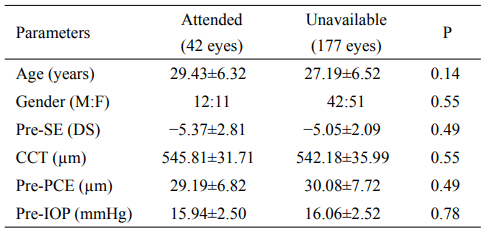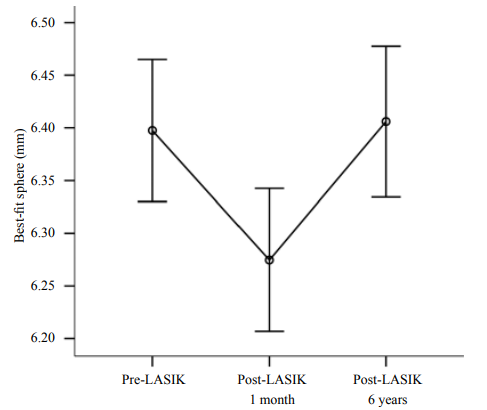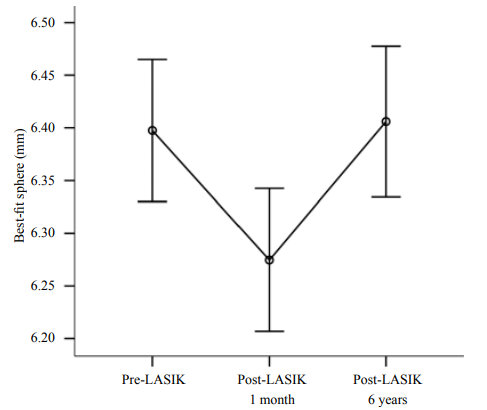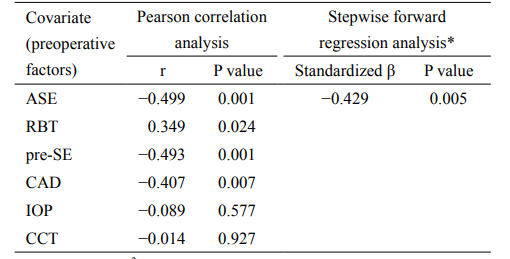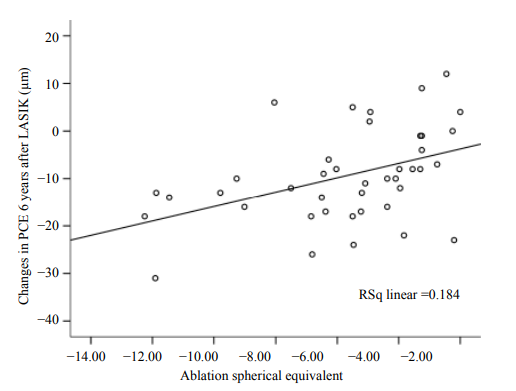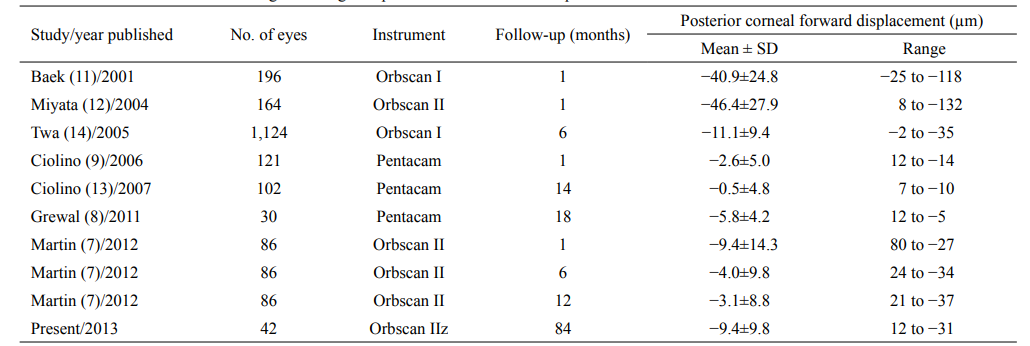1、Seiler T, Koufala K, Richter G. Iatrogenic keratectasia after laser in situ keratomileusis. J Refract Surg 1998;14:312-7
2、Binder PS. Analysis of ectasia after laser in situ keratomileusis: risk factors. J Cataract Refract Surg 2007;33:1530-8.
3、Kim TH, Lee D, Lee HI. The safety of 250 microm residual stromal bed in preventing keratectasia after laser in situ keratomileusis (LASIK). J Korean Med Sci 2007;22:142-5.
4、Randleman JB, Russell B, Ward MA, et al. Risk factors and prognosis for corneal ectasia after LASIK. Ophthalmology. 2003;110:267-75.
5、Twa MD, Nichols JJ, Joslin CE, et al. Characteristics of corneal ectasia after LASIK for myopia. Cornea 2004;23:447-57
6、Pallikaris IG, Kymionis GD, Astyrakakis NI. Corneal ectasia induced by laser in situ keratomileusis. J Cataract Refract Surg 2001;27:1796-802.
7、Martin R, Rachidi H. Stability of posterior corneal elevation one year after myopic laser in situ keratomileusis. Clin Exp Optom 2012;95:177-86.
8、Grewal%20DS%2C%20Brar%20GS%2C%20Grewal%20SP.%20Posterior%20corneal%20elevation%20after%20LASIK%20with%20three%20%EF%AC%82%20ap%20techniques%20as%20measured%20by%20Pentacam.%20J%20Refract%20Surg%202011%3B27%3A261-8.
9、Ciolino JB, Belin MW. Changes in the posterior cornea after laser in situ keratomileusis and photorefractive keratectomy. J Cataract Refract Surg 2006;32:1426-31.
10、Miháltz K, Kovács I, Takács A, et al. Evaluation of keratometric, pachymetric, and elevation parameters of keratoconic corneas with pentacam. Cornea 2009;28:976-80.
11、Baek T, Lee K, Kagaya F, et al. Factors affecting the forward shift of posterior corneal surface after laser in situ keratomileusis. Ophthalmology 2001;108:317-20.
12、Miyata K, Tokunaga T, Nakahara M, et al. Residual bed thickness and corneal forward shift after laser in situ keratomileusis. J Cataract Refract Surg 2004;30:1067-72.
13、Ciolino JB, Khachikian SS, Cortese MJ, et al. Longtermstability of the posterior cornea after laser in situ keratomileusis. J Cataract Refract Surg 2007;33:1366-70.
14、Twa MD, Roberts C, Mahmoud AM, et al. Response of the posterior corneal surface to laser in situ keratomileusis for myopia. J Cataract Refract Surg 2005;31:61-71.
15、Grzybowski DM, Roberts CJ, Mahmoud AM, et al. Model for nonectatic increase in posterior corneal elevation after ablative procedures. J Cataract Refract Surg 2005;31:72-81.
16、Randleman JB, Woodward M, Lynn MJ, et al. Risk assessment for ectasia after corneal refractive surgery. Ophthalmology 2008;115:37-50.
17、Quisling S, Sjoberg S, Zimmerman B, et al. Comparison of Pentacam and Orbscan IIz on posterior curvature topography measurements in keratoconus eyes. Ophthalmology 2006;113:1629-32.
18、Hernández-Quintela E, Samapunphong S, Khan BF, et al. Posterior corneal surface changes after refractive surgery. Ophthalmology 2001;108:1415-22.
19、Maloney RK. Discussion of paper by Wang Z, Chen J, Yang G. Posterior corneal surface topographic changes after laser in situ keratomileusis are related to residual corneal bed thickness. Ophthalmology 1999;106:409-10.
20、Cheng%20AC%2C%20Ho%20T%2C%20Lau%20S%2C%20et%20al.%20Evaluation%20of%20the%20apparent%20change%20in%20posterior%20corneal%20power%20in%20eyes%20with%20LASIK%20using%20Orbscan%20II%20with%20magni%EF%AC%81%20cation%20compensation.%20J%20Refract%20Surg%202009%3B25%3A221-8.
21、Nishimura R, Negishi K, Saiki M, et al. No forward shifting of posterior corneal surface in eyes undergoing LASIK. Ophthalmology 2007;114:1104-10.
22、Ha BJ, Kim SW, Kim SW, et al. Pentacam and Orbscan II measurements of posterior corneal elevation before and after photorefractive keratectomy. J Refract Surg 2009;25:290-5.

